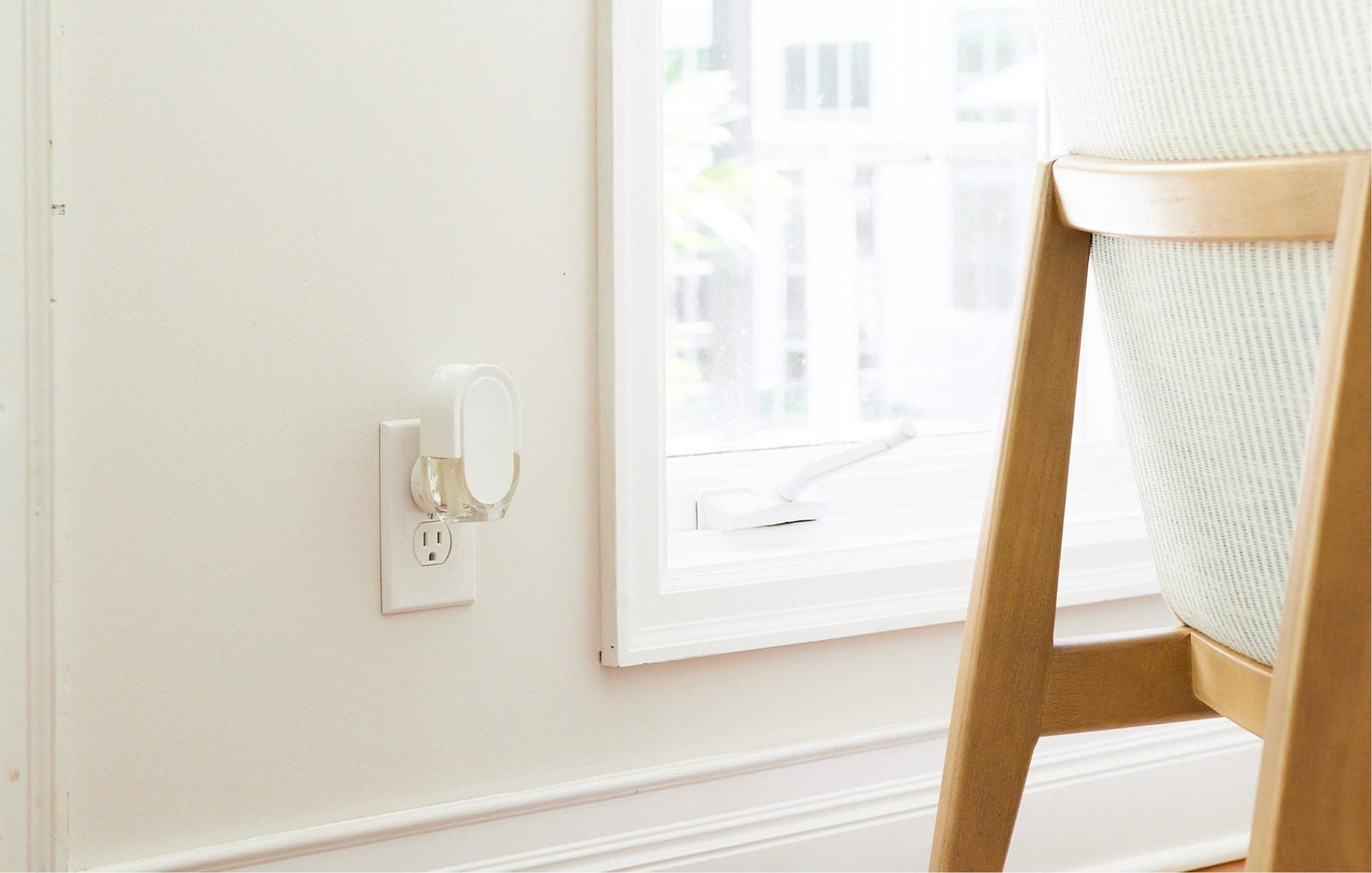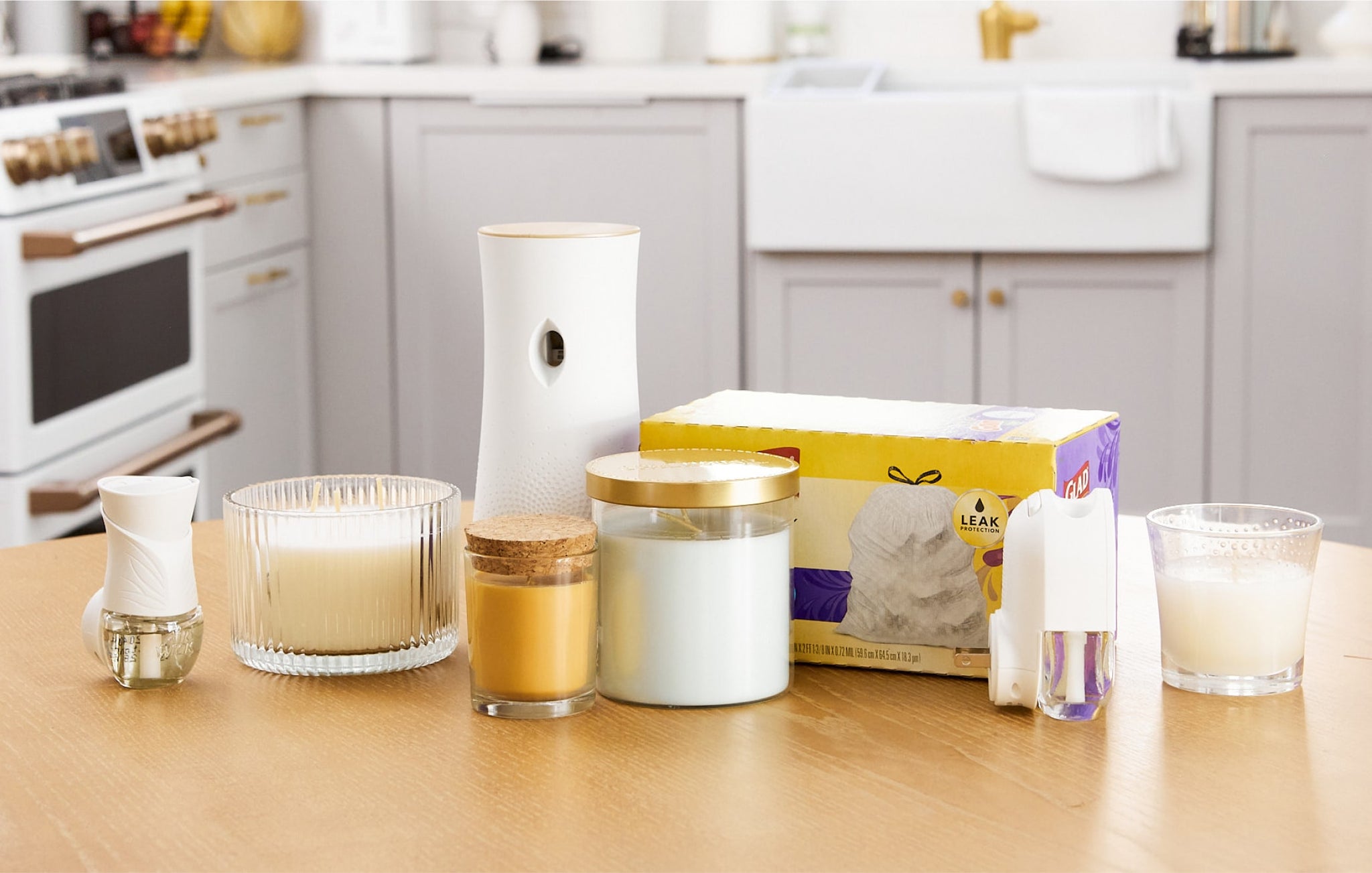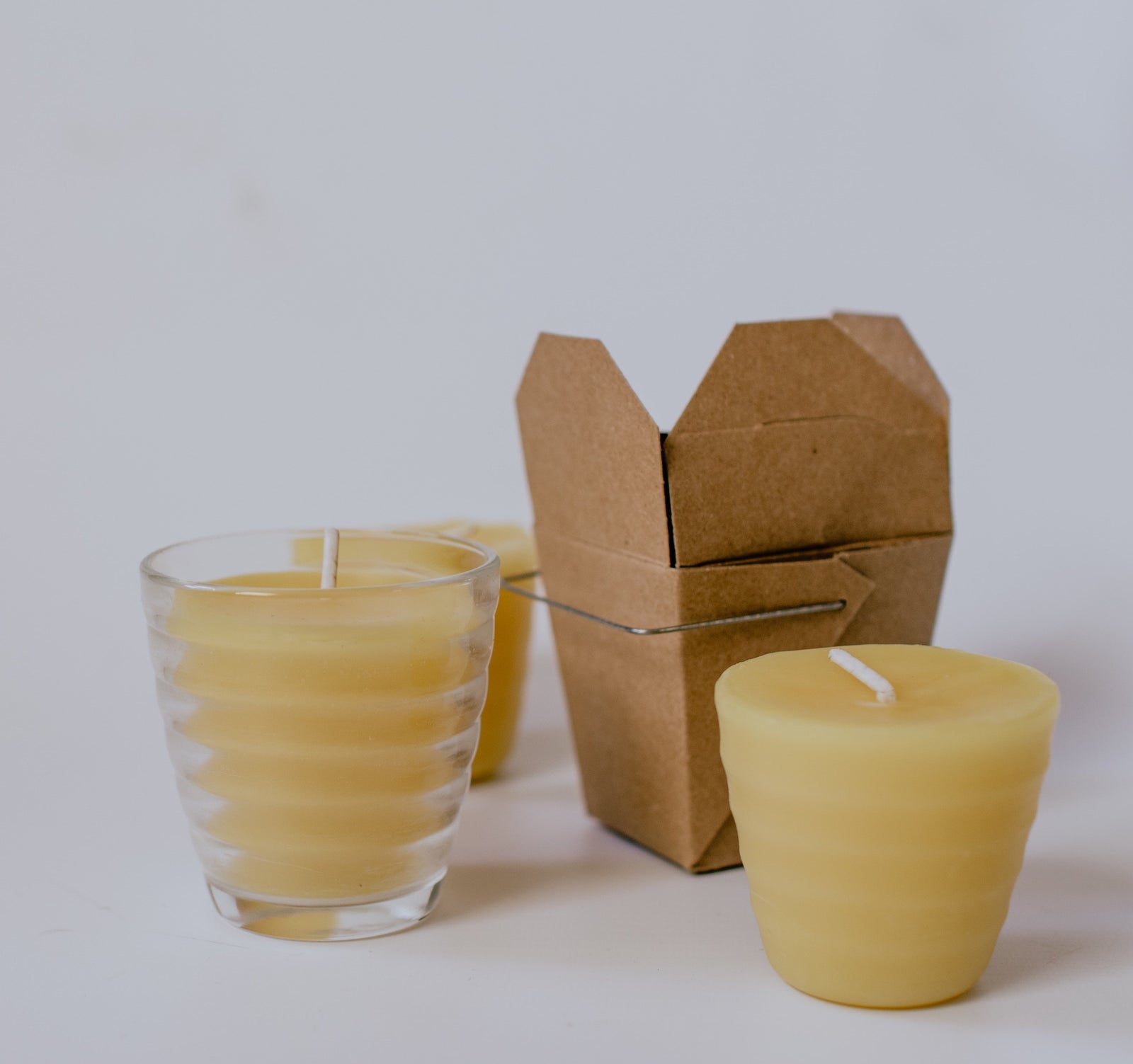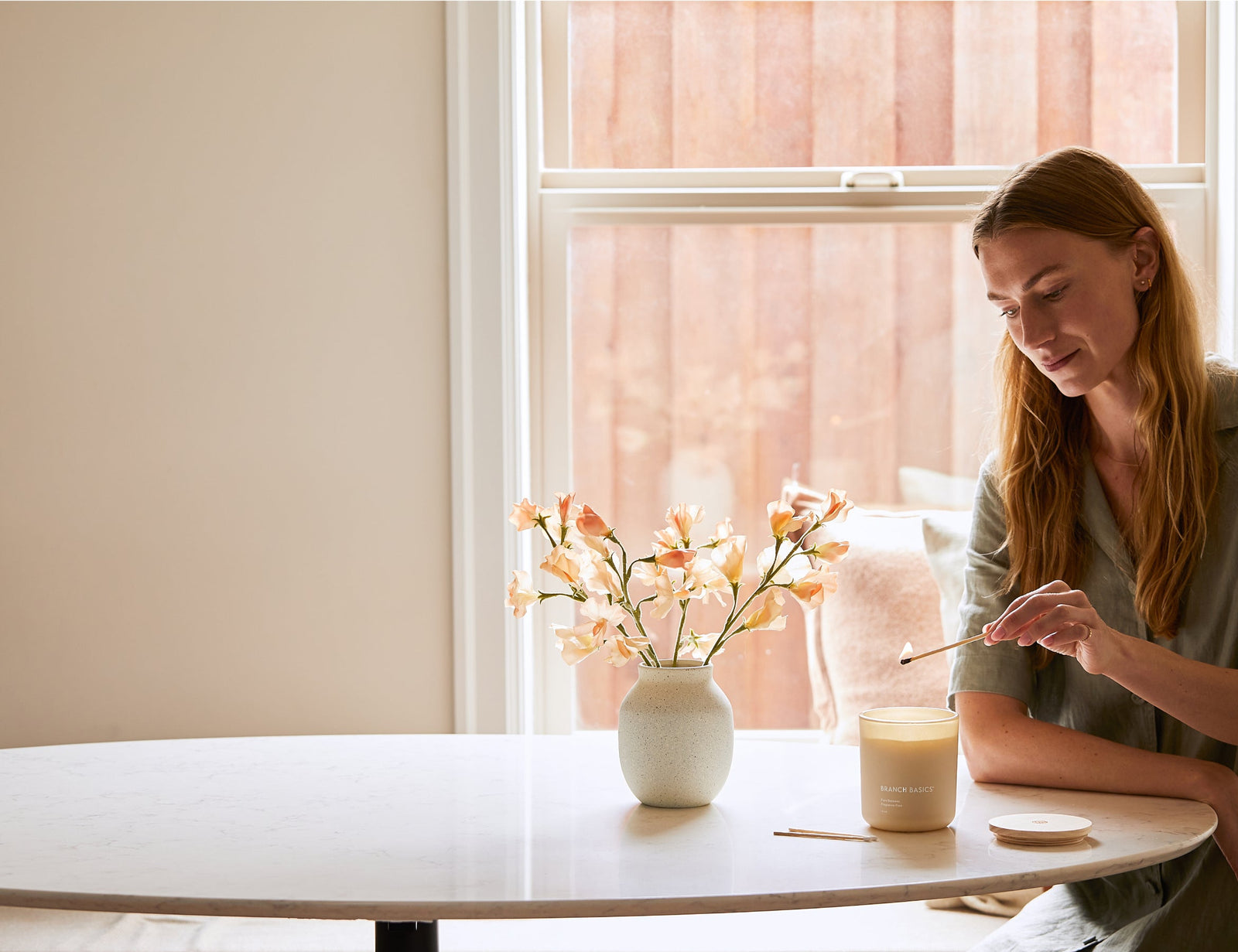7 Non-Toxic Air Fresheners & How To Remove Odors Naturally

It is estimated that 75% of US households use some type of air freshener.[1]
They come in many forms: sprays, gels, oils, hanging disks, potpourri, oil stick diffusers, air wicks, and plug-ins.
Sadly, air fresheners are among the most toxic products found in our homes, continually emitting synthetic fragrance.
They are a primary source of hundreds of harmful volatile organic compounds (VOCs), some of which create secondary reaction products[2] if ozone is present.
These include:[3][4][5]
- Formaldehyde
- Acetaldehyde
- Glycol
- Ethers
- Free radicals
-
Ultrafine particles
In addition to the health issues linked to synthetic fragrance recipes, other chemicals used to make conventional air fresheners have been shown to cause migraine headaches, earaches, metabolic syndrome, nausea, and many other things, plus they're toxic to our furry friends.
Keep reading to learn how to create a safer and healthier home with non-toxic air fresheners.
Related: Wondering why it's easy to feel dependent on synthetic fragrances? Check out The Emotional Attachment to Fragrance.
The Dangers of Conventional Air Fresheners
Dr. R. Anderson, a toxicologist and president of Anderson Labs, has studied the acute biological effects of polluted air on laboratory animals for 30 years.
When Anderson Labs tested air fresheners, each sample was placed in a closed box. Air was blown over the sample, and mice were exposed to it [6].
The following adverse effects were observed with the smallest quantity of freshener tested.
- Severe pulmonary irritation was comparable to asthma in humans.
- Sensory irritation increased over twenty minutes, becoming severe and remained severe until the freshener was removed.
- Neurological impairments were so severe that some of the mice were close to death.
- Neurological effects which displayed as aberrant behaviors. The EPA states if neuro-toxic effects are seen in animals, then neuro-toxic effects are expected in humans.
According to a study by the Natural Resources Defense Council (NRDC), 86% of plug-in air fresheners tested contain phthalates[7]
Even trace amounts of phthalates interfere with the production of testosterone, have been associated with reproductive abnormalities, and can cause allergic symptoms and asthma.
Plug-in air fresheners are also known to release formaldehyde, a known carcinogen linked to cancers of the nose and throat, ongoing irritation of the throat and airways, potentially dangerous infections, frequent nosebleeds, asthma, and other respiratory ailments.[8]
These risks are particularly elevated in the elderly, infants, pregnant women, and people with compromised immune systems.
How to Remove Odors Naturally
It is hard to believe toxic products like this could be sold and put in our homes.
But you made it to this article, so you have a wonderful opportunity to make a difference in your family’s health.
First, go around your house and completely remove all of the air fresheners you have.
It's tough to do, but it's the best option for your health.
We completely understand we all love to have clean, fresh-smelling homes!
However eliminating the source of odors truly improves air quality instead of trying to cover them up with conventional air fresheners that pollute a home's air and harm our health.
So, how do we improve air quality without using synthetic air fresheners?
Here's how:
1. Toss toxic products to eliminate the source of odors

- Eliminate the source: The simple, no-cost action of taking a box and removing products with harmful ingredients from your home immediately dramatically freshens and improves your home's air quality.
-
Category by category: Use this guide to help you start creating your Heathy Home. You can take it category by category or one step at a time.
- Phase 1: Pesticides, Cleaning Products, Laundry Products
- Phase 2: Fragranced Products, Personal Care Products
- Phase 3: Plastics - BPA / Phthlates
- Phase 4: Perfluorinated Substances (PFASs), Formaldehyde
Related Reading: The Best Fragrance-Free Cleaning Products
2. The Three V's - Vacuum, Ventilate, and Vodka

1. Vacuum
We often mention how important it is to do regular HEPA vacuuming and its benefits for your health.
Did you know that vacuuming is actually one of the best ways to remove odors as well? For normal maintenance, aim to vacuum once a week.
If you are noticing a particular odor, try sprinkling the area (carpet or upholstery) with baking soda and let it sit for 30 minutes before vacuuming.
The baking soda will deodorize the area and absorb the odor, which you can then vacuum up entirely. Repeat as necessary until odor disappears.
2. Ventilate
One of the simplest ways to freshen the air in your home is to open the windows and turn on a fan.
In fact, regularly opening your windows throughout the year, even for just 10 minutes morning and evening, increases oxygen and flushes and clears the air. So don’t be afraid to bring in fresh air the old-fashioned way with a nice cross breeze.
3. Vodka
Vodka is an excellent, unscented air freshener.
Simply pour one part inexpensive, unflavored vodka and three parts distilled water into a spray bottle and use as an air mister.
It will help reduce stale and musty odors.
Remember, just like any sprayed product (even if non-toxic), you do not want to breathe in while the sprayed solution is still aerosolized.
3. Utilize Baking Soda

Baking soda is a fantastic, low-tox odor absorber for any of the following:
- Carpet and Upholstered Furniture: Sprinkle baking soda on surface, let sit 30 minutes or overnight, then vacuum away to freshen and remove odors.
- Bedding: Refresh your mattress with baking soda. Sprinkle on mattress stripped of all bedding, let sit 30 minutes or overnight, then vacuum away odors.
- Refrigerator: Keep your refrigerator smelling fresh with two baking soda boxes, one for fridge and and one for freezer. Use new boxes every month to absorb and deodorize food odors*.
- Closets: Keep your closets smelling fresh by storing baking soda boxes in inconspicuous places. Use new boxes every month to absorb and deodorize odors from clothes and shoes*.
- Clothes: Freshen and deodorize clothes. Add a cup or two baking soda to your laundry wash load.
- Shoes: Sprinkle shoes with baking soda overnight to absorb odors. Dump or vacuum out.
- You can also set out a bowl (or box) of baking soda in an inconspicuous area of your home to absorb and neutralize odors in the air.
*Over time, baking soda slowly loses its odor-absorbing powers. If you notice it is no longer as effective, swap out the baking soda for a fresh batch.
Related reading: Cleaning With Baking Soda (Sodium Bicarbonate): 12 Surprising Uses
4. White Vinegar

White vinegar is a cleaner of a thousand uses, including being a useful odor remover.
- Clothes: Add one cup vinegar to washing machine during wash cycle to freshen and soften clothes while removing odors.
- Room Freshener: Pour a cup of white vinegar in a small bowl and place in a safe spot somewhere in your home.
- Cooking Odors: Boil a teaspoon of white vinegar in half pint of water to remove unpleasant cooking odors in the kitchen.
- Smoking Odors and Perfume: A mixture of 1 teaspoon of vinegar to a pint of water, kept in a hand sprayer, can neutralize these odors.
Note: Although vinegar is edible, we recommend keeping this bowl out of the reach of children and pets.
Don’t forget to swap out the vinegar after it no longer absorbs odors.
Related reading: Apple Cider Vinegar Vs. White Vinegar: Which Is Better For Cleaning
5. Charcoal Air Fresheners

You can make your own DIY activated charcoal pouches, which can be placed anywhere you need an odor absorber.
If you’d like to skip the DIY options, we recommend Moso and Breathegreen brand natural air fresheners.
These pouches are versatile and can be slipped in a stinky shoe or tucked inside your car.
6. Try These Natural Air Fresheners

If you would like to add safe and natural fragrance to your home's air, consider the following:
- Fragrant Houseplants: There are many houseplants that can act as natural air fresheners, whose flowers or leaves scent the air in your home. In addition, plants oxygenate and revitalize the air.
- Air Cleaning Plants: Take advantage of plants that have been tested to remove harmful chemicals from your home's air. These plants can remove chemical odors as well as oxygenate your home.
- Lemon Peel: Grind up lemon peel while running hot water into your garbage disposal to remove odors in the disposal and freshen the kitchen air.
- Herbs and Spices: Grow your own basil, mint, lavender, thyme, oregano, etc. as natural air fresheners that will also provide you with ingredients for cooking.
- Wildcrafted and Organic Essential Oils Processed without Solvents: Diffuse to add scents to your home.
- Vanilla Extract: Place a cotton ball soaked in vanilla extract in a small saucer in your home to freshen the air.
7. Simmer Pots

Simmer pots can be more than just a holiday-time favorite. Try one of our favorite simmer pot recipes!
Boil these ingredients together, and then simmer in water to eliminate lingering odors and freshen the air:
- Cinnamon sticks and cloves
- Sliced lemon, rosemary and a splash of vanilla extra
- Orange, rosemary sprigs and cinnamon sticks
- Cranberries, cloves and apples
If you’d like to know more about the hazards of using scented products, check out Fragrance is the New Secondhand Smoke.
Toss The Toxins With Branch Basics
The use of conventional air fresheners, laden with harmful chemicals and synthetic fragrances, poses serious health risks, from respiratory issues to neurological impairments.
The good news is that there are numerous effective and non-toxic alternatives to improve the air quality in your home.
By eliminating the sources of odors, such as chemical-laden products, and opting for natural remedies like baking soda, vinegar, activated charcoal, and even fragrant houseplants, you can create a healthier environment without compromising on freshness.
Cleaning products are a significant source of harmful fragrance chemicals, which is why we recommend swapping them for safer alternatives, like Branch Basics.
Our all-in-one human-safe, biodegradable, and refillable cleaning system works just as well as the hard stuff with none of the harmful chemicals.
Just one bottle of our signature Concentrate plus water creates enough cleaning products to replace every conventional cleaner and laundry product in your home—talk about simple and economical!
Get started with a toxin-free household with the Branch Basics Ultimate Starter Kit!
Wondering how it all works? Check out How To Get Started With Your Branch Basics Kit.
References:
- https://content.time.com/time/health/article/0,8599,1664954,00.html
- https://www.sciencedirect.com/topics/earth-and-planetary-sciences/reaction-product
- https://www.sciencedirect.com/topics/earth-and-planetary-sciences
- www.sciencedirect.com/topics/earth-and-planetary-sciences/glycol
- https://www.sciencedirect.com/topics/earth-and-planetary-sciences/ether
- https://pubmed.ncbi.nlm.nih.gov/9541364/
- https://www.nrdc.org/sites/default/files/airfresheners.pdf
- https://www.epa.gov/formaldehyde/facts-about-formaldehyde#whatisformaldehyde
Categories

Marilee Nelson
Marilee Nelson is an Environmental Toxins expert who has spent nearly 30 years advocating for the chemically-sensitive and chronically-ill. She is a Board Certified Nutritionist, Certified Bau-Biologist and Bau-Biology Inspector and specializes in Food As Medicine. She has helped thousands of families and individuals identify, heal and recover from toxic exposures and is on a mission to revolutionize the way American families view their health.








